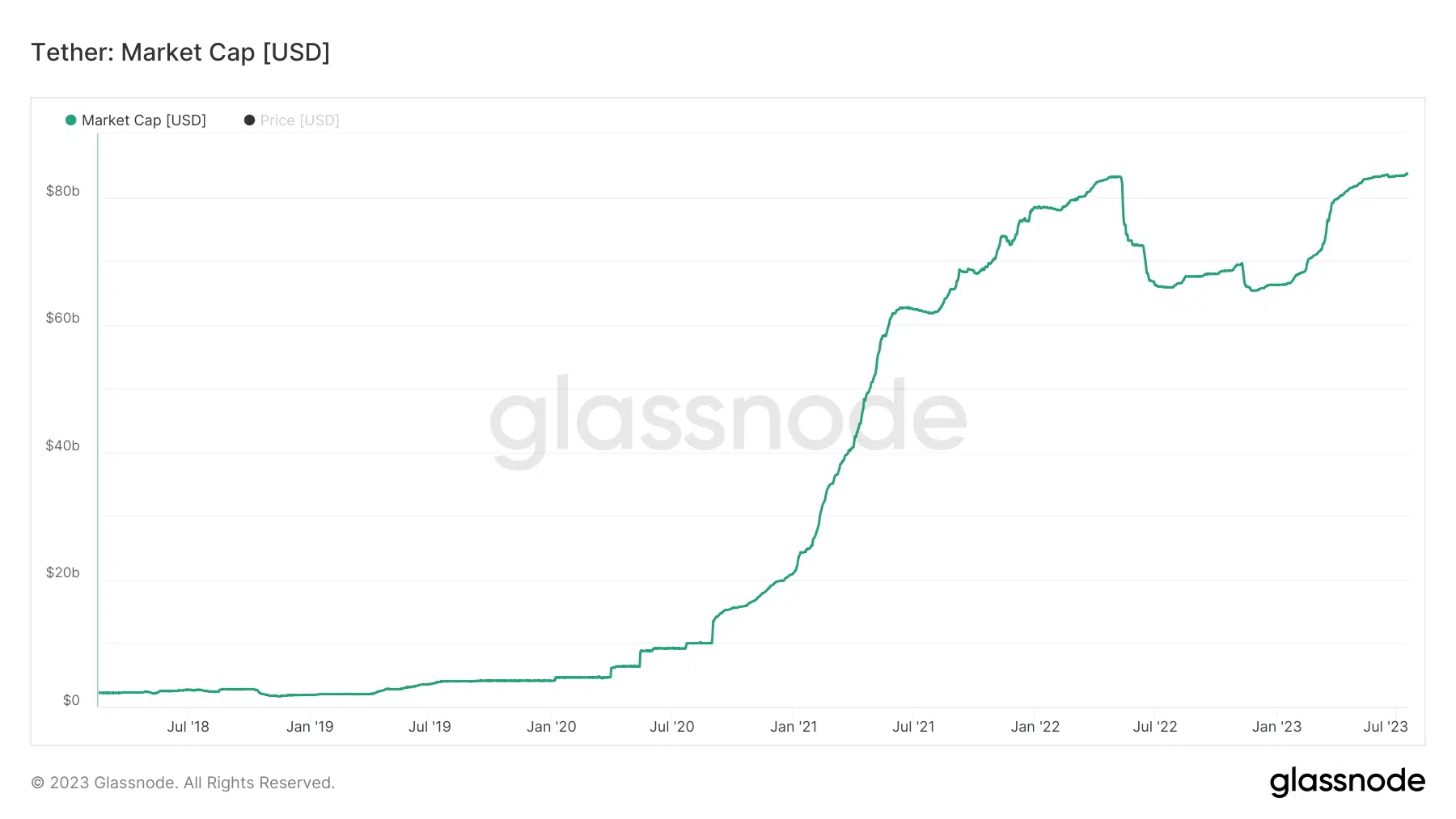Why India has been unwelcoming to stablecoins

- RBI underlined the weaknesses of stablecoins in light of the recent depeggings and redemption pressures.
- India has been looking to build a consensus among G20 economies to regulate stablecoins.
Of all cryptocurrencies, stablecoins have proven to be the closest to traditional finance and the general public has increasingly shown willingness to leverage its benefits over the years.
As the name suggests, these assets are the oasis of stability in the turbulent world of cryptocurrencies. While other entities like Bitcoin [BTC] and Ethereum [ETH] are susceptible to wild intraday swings, stablecoins remain tightly coupled to the underlying fiat currencies, most notably the U.S. Dollar (USD).
This one-of-a-kind mix of crypto-like decentralization and national currency-like stability has led countries across the world to accommodate stablecoins into their respective economies.
That being said, their biggest stumbling block in the road towards global adoption could come from emerging markets. India, the fifth-largest economy, and hosting the largest number of people on the planet, presents a tough challenge to entry of stablecoins in the country.
India red-flags stablecoins
According to a report by Indian news organization The Hindu, T Rabi Sankar, Deputy Governor of India’s central bank, expressed severe misgivings about the widespread usage of stablecoins and went to the extent of labeling them as “existential threat to policy sovereignty”.
The official from Reserve Bank of India (RBI) stated that stablecoins are only useful to western economies. Most of the current stablecoins are tethered to the U.S. dollar or European currencies. On the contrary, in a country like India, they could lead to dollarization and dwarf the usage of Indian Rupee.
At first glance, the comments made by the number two at India’s central bank appear to hold water. According to data from CoinMarketCap, nearly all of the top 10 stablecoins by market cap are pegged to the USD.
Indians weigh in
India was ranked fourth on the list of global cryptocurrency adoption index in 2022, above the United States, Russia, and China, as per a report by blockchain analytics platform Chainalysis. The penetration and awareness about cryptos and blockchain technologies is considerably high in the country.
The responses within the local circles to RBI’s official policy have been diverse. Fintech expert and founder of FV Bank, Nitin Agarwal sided with the government’s view and said,
“It’s essential for major economies worldwide to embrace stablecoins denominated in their own currencies in order to prevent the shift of trade and cross-border remittances to alternative currency-backed stablecoin.”
Sudhir Khatwani, a crypto and blockchain expert from The Money Mongers, called the concerns legitimate but was not in favor of “across-the-board-restrictions.” He went on to say,
“By implementing thoughtful regulation, India could strike a balance between preserving monetary policy sovereignty and encouraging innovation in the cryptocurrency sector.”
However, this was not the first time the RBI raised the threat that stablecoins posed to monetary and capital regulations.
RBI’s long list of concerns
RBI’s Financial Stability Report of June 2023 underlined the weaknesses of stablecoins in light of the recent collapses (read depeggings) and redemption pressures. The report stated that their purported benefits like financial inclusion and faster, cross-border payments were yet to come to fruition.
RBI highlighted several potential risks that stablecoins posed to emerging markets and developing economies (EMDEs). Apart from the currency substitution bit mentioned earlier, RBI pointed out what it thought was the threat of “cryptoization” of the economy.
Increasing use of cryptos as a medium of exchange and a savings option could pose significant currency mismatch risks on the balance sheets of banks, firms, and households. In turn, this could limit the central bank’s ability to effectively implement monetary policy.
Continuing its attack, the central bank cautioned that the decentralized and borderless nature of these assets would make it easy to evade capital control measures during periods of economic downturns.
RBI then went on to highlight the possible fallout on commercial banks, regarded as bellwether of a country’s economic outlook. The influx of stablecoins could lead people to ditch conventional deposits, thereby blocking the flow of capital to banks. The fall in deposits could then hamper banks’ ability to extend capital to individuals and institutions.
Lastly, but predictably, RBI raised the dangers of stablecoins’ anonymity in aiding money laundering and terrorist activities.
CBDCs vs Stablecoins
India has adopted a hawkish stance as far as the crypto-space is concerned. The RBI had prohibited banks from providing support to entities or persons dealing with cryptocurrencies until March 2020. It was then that the country’s apex court reversed this decision.
However, this did not imply that the government was opposed to the concept of digital currencies or payments in general. India, in fact, has seen exponential increase in the use of digital payment methods, such as mobile wallets, Unified Payments Interface (UPI), and card payments over the years, according to data from National Informatics Centre. UPI, especially, has been strongly promoted by the government.
Therefore, to provide the benefits of virtual currencies but at the same time avoid the ‘damaging social and economic consequences’ of crypto assets, India, like other emerging economies of the world, has turned towards Central bank digital currencies (CBDCs).
As the name suggests, these assets will be issued by the central bank. And each CBDC will be pegged to the country’s national currency, in this case the Indian Rupee. Finance Minister Nirmala Sitharaman announced the introduction of CBDCs in her budget speech of 2022 and said that RBI was gearing up for its launch in 2023.
Interestingly, the minister mentioned that the “Digital Rupee” would be based on blockchains and other technologies.
West vs East divide
There existed a stark difference in countries’ policies towards stablecoins. For all the allegations of regulatory high-handedness in the recent past, U.S. has been comparatively friendlier to these decentralized currencies operating within its borders.
In a recent testimony to the House Financial Services Committee, Federal Reserve Chair Jerome Powell called stablecoins as a “a form of money” while categorically mentioning that CBDC’s won’t be rolled out soon.
Stablecoins’ USD peg is a big plus since it shields the American economy from potential problems that might be grave for emerging nations.
But the case in India as highlighted throughout, and other countries in its vicinity, was markedly different.
Once the Bitcoin [BTC] trading and mining capital of the world, Asia’s economic giant China imposed a blanket ban on cryptocurrencies in 2021.
Pakistan, India’s western neighbor, outlawed cryptocurrencies recently, citing requirements by the Financial Action Task Force (FATF) which removed Pakistan from its grey list last year.
India has taken the lead among the Group of 20 (G20) nations in voicing concerns around stablecoins. Currently, the G20 Presidency sits with India. And the country was hoping to build a consensus on a roadmap for cryptocurrencies.
In what could be an indication of increased regulatory oversight in the days to come, G20’s Financial Security Board (FSB) revised its existing recommendations for stablecoins in a recently published report.
Boon for economically unstable nations?
Stablecoins have been found to be beneficial for countries going through economic turmoil. As the native currency undergoes massive devaluation, people look to convert their savings to safe-haven assets like the USD.
While the conventional methods of exchange like commercial banks and online forex services could be time-consuming, the crypto derivatives of USD, stablecoins, turn out to be a convenient option.
Tether [USDT] remains the largest and most popular stablecoin in circulation. After a significant dip in value during last year’s bear market, USDT made a robust recovery in 2023. It recouped nearly all of the lost market cap, per data from Glassnode.
USDT’s usage has shot up in Turkey, which has been battling chronic hyperinflation over the last few years. Russians also have exhibited interest in its potential. The short-lived Wagner rebellion in Russia saw a dramatic jump in trade volume between Russia’s official currency Ruble and USDT.







